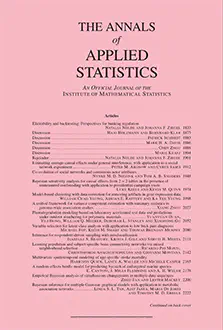
Abstract
In the summer of 2017, the National Basketball Association reduced the number of total timeouts, along with other rule changes, to regulate the flow of the game. With these rule changes it becomes increasingly important for coaches to effectively manage their timeouts. Understanding the utility of a timeout under various game scenarios, for example, during an opposing team’s run, is of the utmost importance. There are two schools of thought when the opposition is on a run (1) call a timeout and allow your team to rest and regroup, or (2) save a timeout and hope your team can make corrections during play. This paper investigates the credence of these tenets using the Rubin causal model framework to quantify the causal effect of a timeout in the presence of an opposing team’s run. Too often overlooked, we carefully consider the stable unit-treatment-value assumption (SUTVA) in this context and use the SUTVA to motivate our definition of units. To measure the effect of a timeout, we introduce a novel, interpretable outcome based on the score difference to describe broad changes in the scoring dynamics. This outcome is well suited for situations where the quantity of interest fluctuates frequently, a commonality in many sports analytics applications. We conclude from our analysis that, while comebacks frequently occur after a run, it is slightly disadvantageous to call a timeout during a run by the opposing team and further demonstrate that the magnitude of this effect varies by franchise.